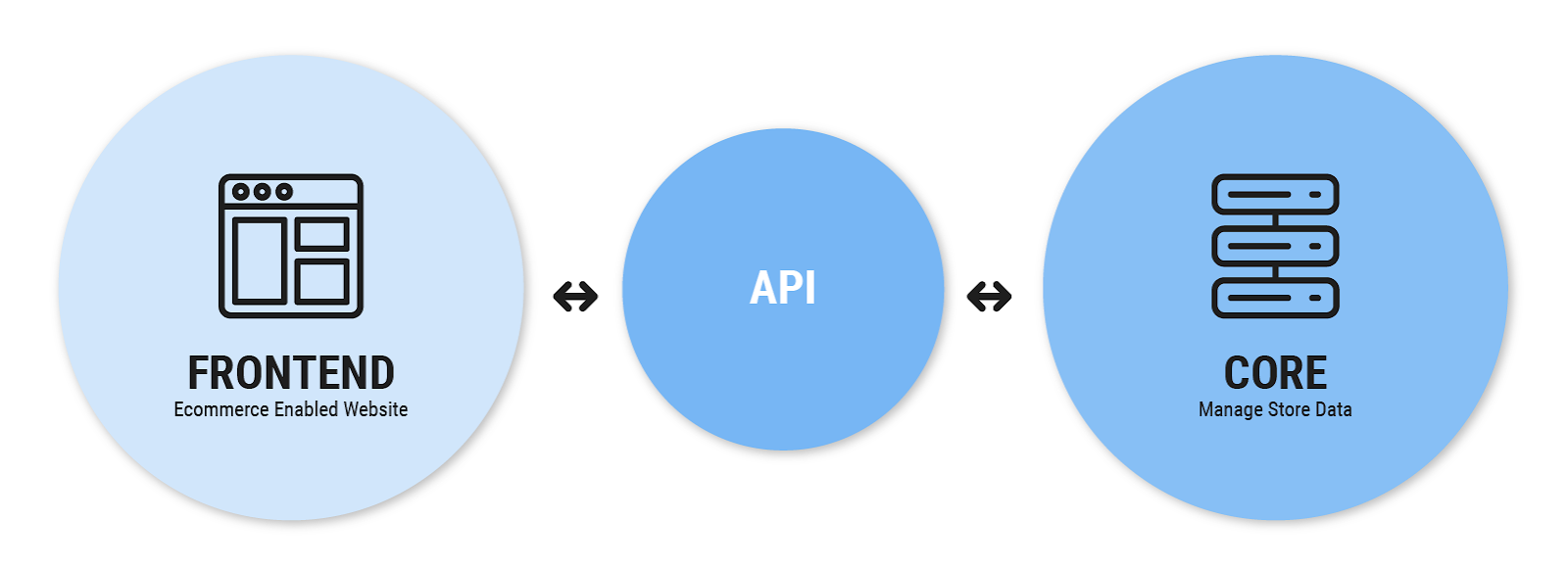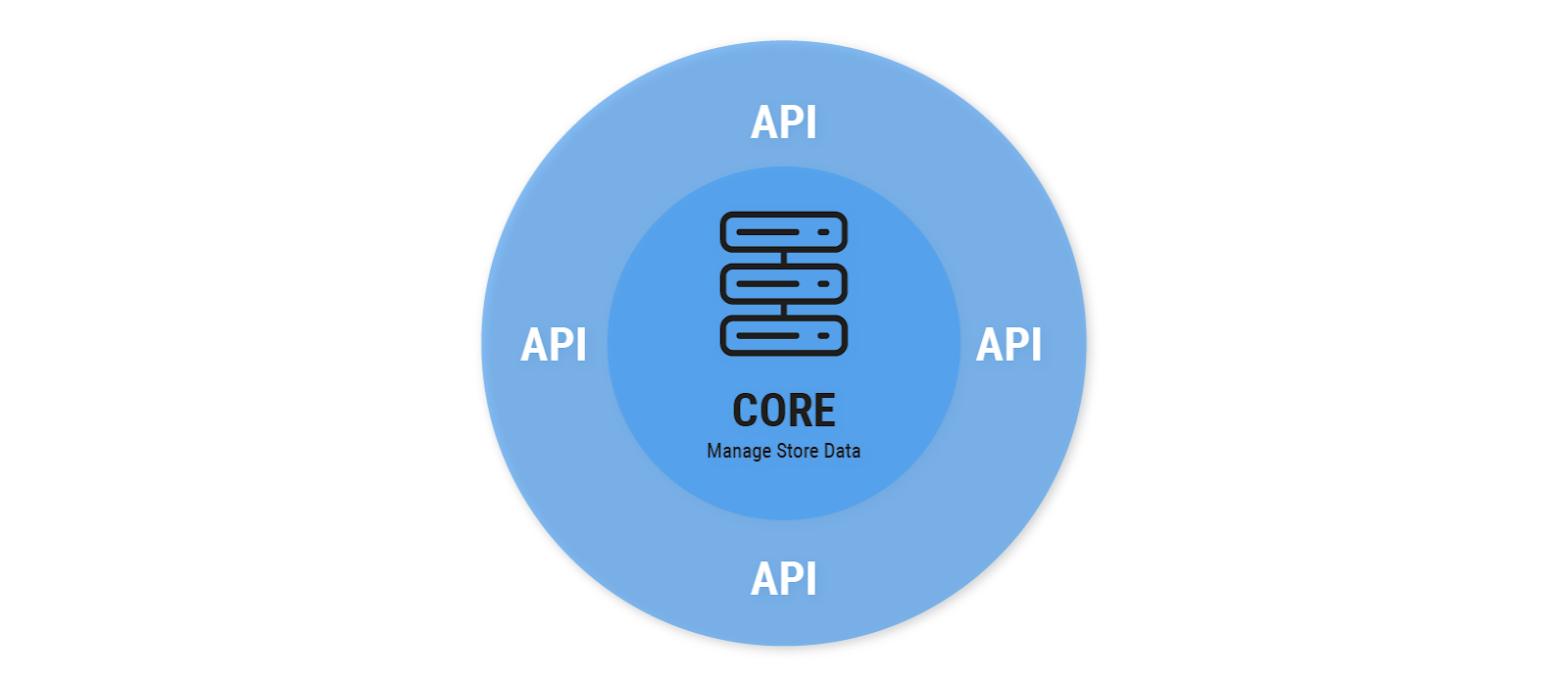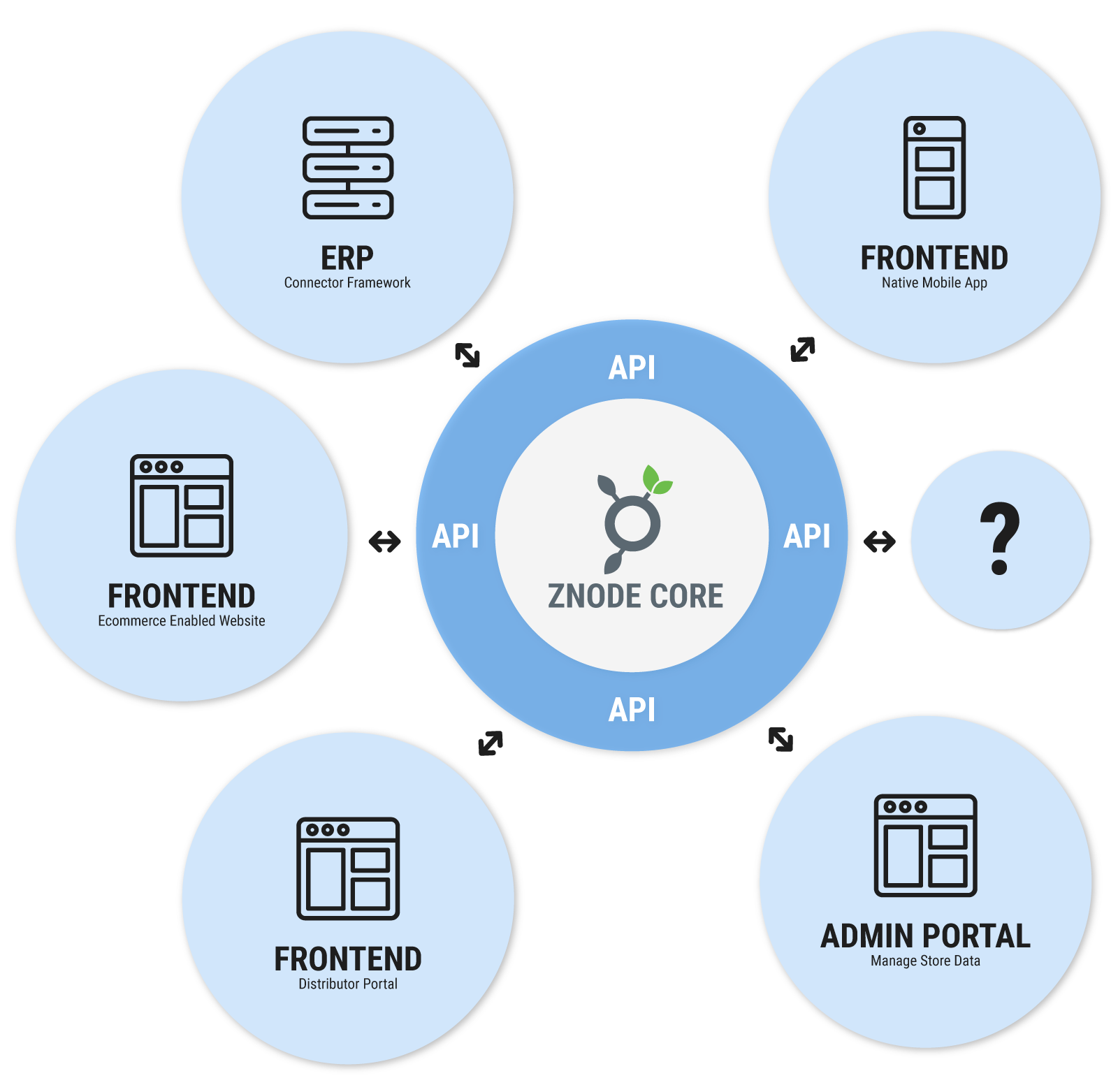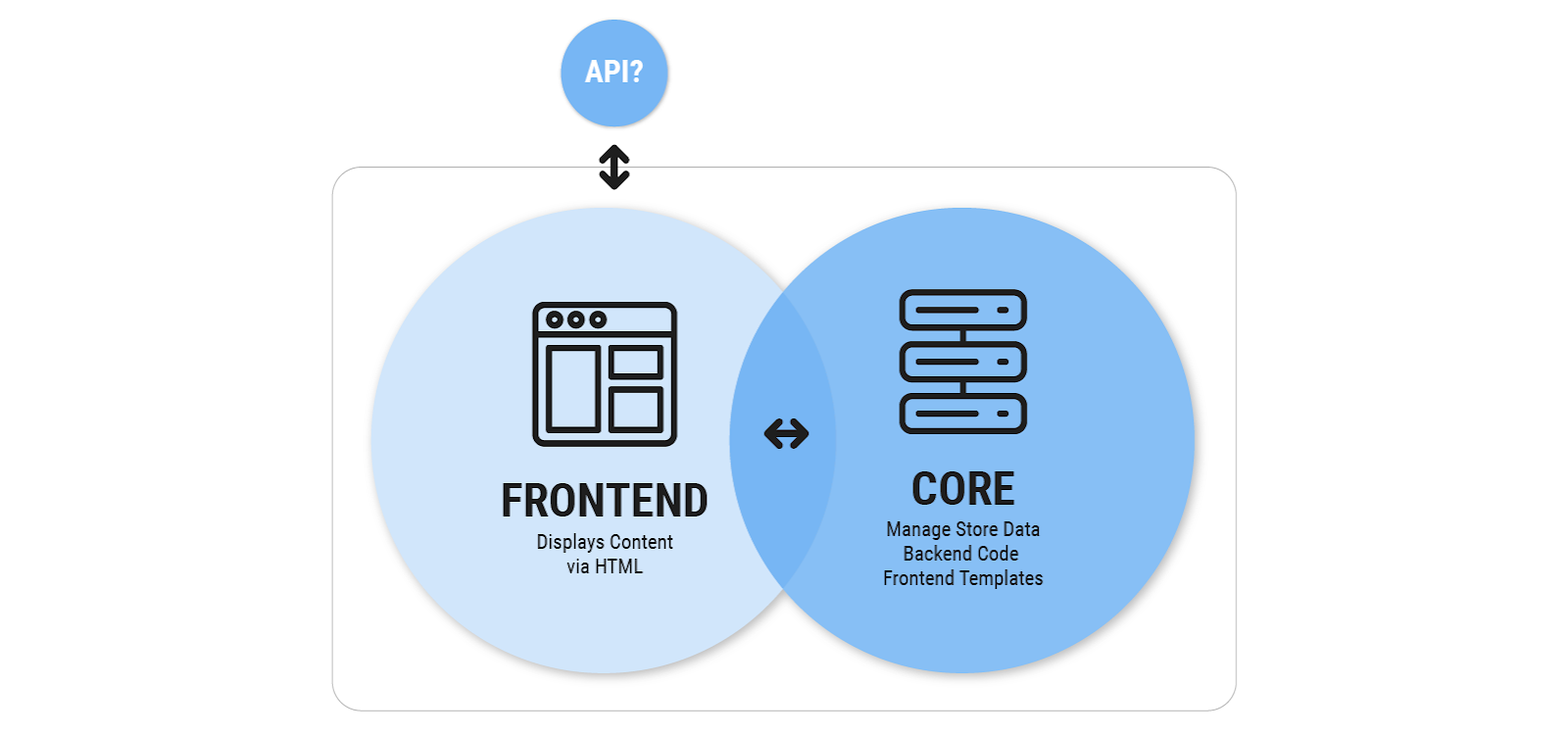understanding headless commerce architecture
Headless commerce is one of the hot new buzz phrases in ecommerce. When something starts trending in the tech industry, misinformation and me-too claims soon follow. So what is headless commerce?
The simplest explanation of headless commerce is an ecommerce platform that separates the data layer and logic layer or core from the presentation layer via APIs.

Jump ahead:
Traditional platforms or monolithic platforms render the presentation layer directly from the data layer without the use of APIs. This limits the platforms flexibility when developing the user-experience. Still, many companies choose to create custom front-end experiences which later creates headaches when the ecommerce platform releases upgrades.
Pure Headless Commerce Architecture
Pure headless commerce platforms deliver the core ecommerce engine with no presentation layer.

This architecture provides companies significantly greater flexibility by allowing companies to develop any front-end calling APIs. This may include the latest browser technologies that are favored by search engines or other applications that serve as the store-front such as vending machines and kiosks.
This flexibility is also extended to the administration app that controls the functionality in the core platform. Companies can build administration panels that are customized to their processes, workflows and unique business situations.
Pure headless architecture drawbacks include speed-to-market and cost. The time to develop custom front-end experiences and administration consoles slows speed-to-market, and while many larger enterprises have the resources to perform this work, many mid-market businesses do not. This additional development adds cost and complexity that many mid-market companies simply cannot afford.
Headless Architecture Enhanced
To enable mid-market companies to gain the benefits of headless commerce without compromising speed-to-market and baring overwhelming cost, Znode offers an enhanced version of headless commerce.
Znode’s core is surrounded by over 1,200 pre-built REST APIs, making Znode a pure headless platform. Like other headless platforms, companies can build front-end (application layer) applications and an administration console using any technology, offering the ultimate in flexibility.
To serve mid-market companies that wish to move to headless commerce and future proof business, Znode offers pre-built themes and templates for front-end stores and a pre-built administration console for managing Znode. These are provided through software development kits (SDKs) and call the APIs surrounding Znode’s core.

Themes are available for manufacturers, distributors and retailers, and can be easily customized to each companies needs. The out-of-box administration console can also be customized as it calls the API layer. Thus, Znode offers the ultimate in flexibility of headless commerce without compromising speed-to-market or the burden of heavy custom investment.
Custom presentation layers or customization to Znode’s themes have little impact on upgrades as Znode is versionless software, allowing for regular functional updates to be consumed. Since the presentation layer and other apps are communicating via API, updates can be applied as the core is not rendering the HTML. This update process should be standard with all headless platforms assuming that no major architectural changes are planned for the core.
Headless Marketecture
Headless marketecture is a phenomenon that occurs when marketing departments at large software companies selling monolithic platforms need to create some marketing magic to remain relevant. A limited set of APIs are exposed around the monolithic platform and the marketing department creates content claiming that the platform is headless.

What to Know
Considering purchasing a headless ecommerce platform? Following are three questions to ask:
- Is the presentation layer calling APIs? If the answer is not a clear yes, keep shopping.
- If the presentation layer is customized, how will it affect an upgrade? A custom presentation layer should have no significant effect on upgrading due to the API layer.
- Is the administration console application calling APIs? If the admin console does not call APIs and cannot be customized, the platform is not truly headless.



